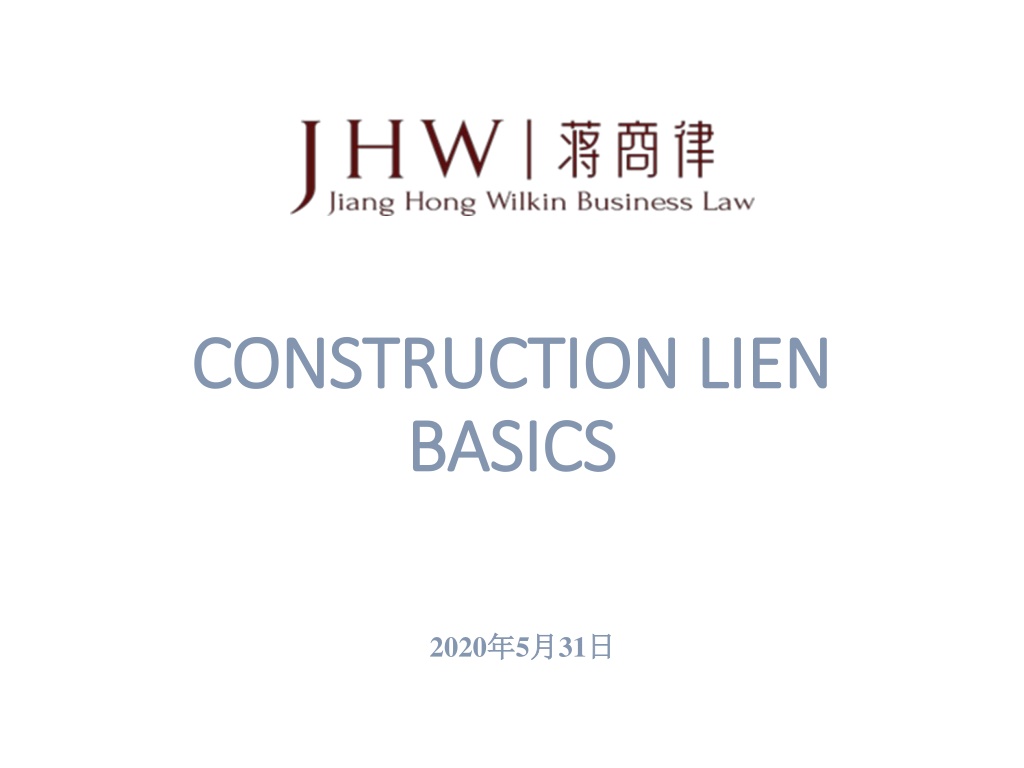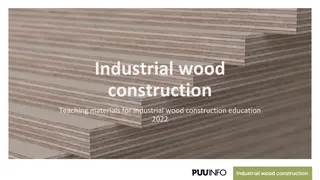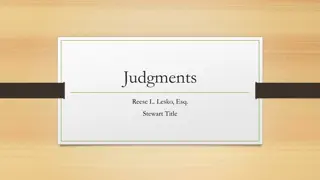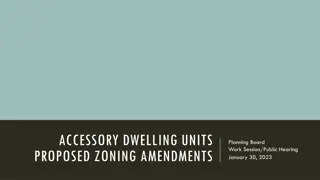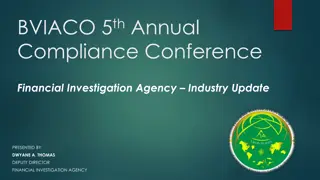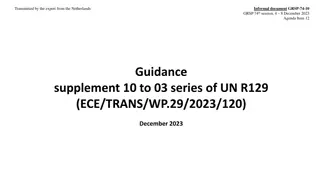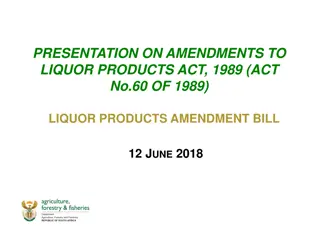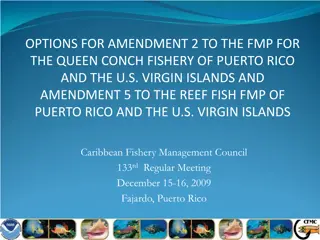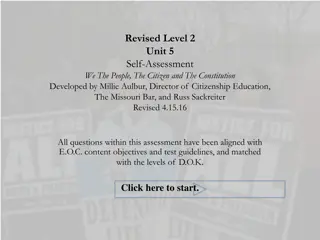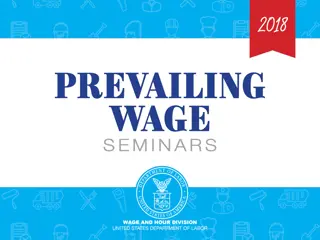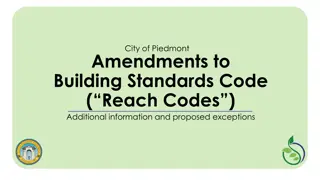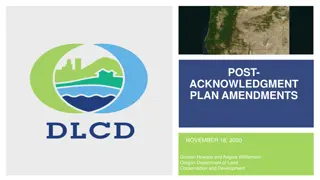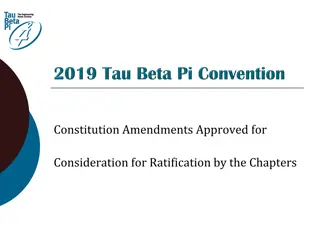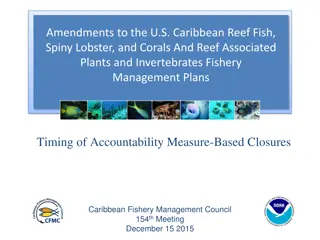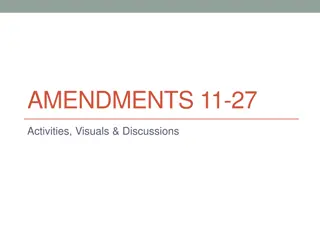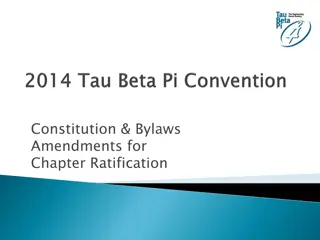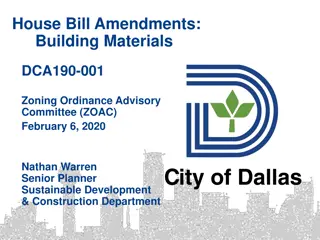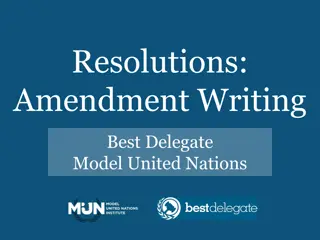Construction Liens: Basics and Amendments Explained
In construction law, a construction lien gives a person the right to a claim upon the property they have improved. Learn about the basics of construction liens, amendments, and how they affect different contracts. Understand the implications of the new Construction Act and its key provisions like prompt payment and adjudication. Explore the Mortgagee Construction Pyramid and the process of when a lien arises.
Download Presentation

Please find below an Image/Link to download the presentation.
The content on the website is provided AS IS for your information and personal use only. It may not be sold, licensed, or shared on other websites without obtaining consent from the author.If you encounter any issues during the download, it is possible that the publisher has removed the file from their server.
You are allowed to download the files provided on this website for personal or commercial use, subject to the condition that they are used lawfully. All files are the property of their respective owners.
The content on the website is provided AS IS for your information and personal use only. It may not be sold, licensed, or shared on other websites without obtaining consent from the author.
E N D
Presentation Transcript
CONSTRUCTION LIEN CONSTRUCTION LIEN BASICS BASICS 2020 5 31
21 20 (IPO, RTO, CPC, QT)
Construction Act (formerly Construction Lien Act) On December 12, 2017, Bill 142, Construction Lien Amendment Act, 2017 received Royal Assent. The Bill amends the ConstructionLien Act (Ontario), and renamed it the Construction Act. The substantive amendments modernizing the new Act also came into force on July 1, 2018. Other amendments including the introduction of prompt payment, adjudication, regulations and forms came into force on October 1, 2019.
Which Act Applies to me? The new regime also will not apply to prime contracts entered into on or after July 1, 2018 or October 1, 2019, if a procurement process for the improvement that is the subject of the contract was commenced by the owner before that day. This non- application of this provision holds true regardless of when any subcontracts under the prime contract were entered into. Generally speaking, if your prime contract was entered into: before July 1, 2018, your project is governed by the previous, pre- amendment version of the Act, being the Construction Lien Act. between July 1, 2018 and September 30, 2019 inclusive, your project is governed by the lien modernization provisions of the new Construction Act, but not the prompt payment or adjudication of the new Act. on or after October 1, 2019, your project is governed by the new Construction Act, including the prompt payment and adjudication provisions
Mortgagee Construction Pyramid Can include a Landlord and/or Tenant Owner Includes Engineer or Architect having direct contract with Owner General Contractor Subcontractor Sub-Subcontractor Workers, Equipment Rentals, Material Suppliers
What is a construction lien? Section 14(1) of the Act provides that, a person who supplies services or materials to an improvement for an owner, contractor or subcontractor, has a lien upon the interest of the owner in the premises improved for the price of those services or materials.
When does a lien arise? The lien creates an interest in the land in favour of those who supply materials or services, thereby creating security. This operates to prevent the owner from receiving improved land without making payment for the improvement. If the lien is unsatisfied, you can take private owner s property, sell it and payback the lien. This is especially important to subcontractors who have no direct contract with the owner (and, therefore, no right to bring an action for payment under a contract). A person s lien arises and takes effect when the person first supplies services or materials to the improvement.
Who can lien? Any person who is under a contract and has supplied services and/or materials to an improvement has a right to lien. Pretty well all persons working on a construction project will have a right to lien, including suppliers of rental equipment, architects, and those who provide design services.
What can you lien? The Act makes reference to an improvement to set out what type of property and what type of work can be liened. An improvement includes the alteration of and/or the addition to the property. This is a broad definition and encapsulates most construction activity. It also includes the construction and installation of industrial, mechanical, or electrical equipment, when that equipment is essential to the regular use of that property. Affixed machinery in a plant such as an automotive assembly plant would fall within the definition of an improvement. It is also possible to lien for work done for a capital repair. This type of work is for work done to extend the economic life of a building or structure. It has to be noted that this does not include just any type of repair, and does not include preventative maintenance.
What is a Capital Repair? a capital repair to land is any repair intended to extend the normal economic life of the land or of any building, structure or works on the land, or to improve the value or productivity of the land, building, structure or works, but does not include maintenance work performed in order to prevent the normal deterioration of the land, building, structure or works or to maintain the land, building, structure or works in a normal, functional state.
What services can you lien for? Supply of services can include: engineering services and architectural services rental of equipment security services to a construction site services of estimating and job supervision.
What is the value of your lien? The Act gives you the ability to lien for the price of services and materials that you provided to the project. Price is a defined term and means: the amount agreed between the parties, or if there is no agreement on the amount, then the market value of the work; AND any direct costs incurred as a result of a delay not caused by provider
What does direct cost really mean? Direct Costs are reasonable costs of performing the contract or subcontract during the extended period of time, including: Costs related to the additional supply of services or materials (including equipment rentals); Insurance and surety bond premiums; and Costs resulting from seasonal conditions; that, but for the extension, would not have been incurred, but do not include indirect damages suffered as a result, such as loss of profit, productivity or opportunity, or any head office overhead costs.
What is the value of your lien? You are not entitled to lien for interest on the amount you are owed, nor can you lien for any indirect costs associated with your claim. You are still at liberty to assert a claim for the amounts as part of a claim for damages under regular contract law. You should never exaggerate the value of your lien. The Act contains specific provisions about an exaggerated lien and that you could be liable for the costs that someone incurs as a result of the exaggerated lien.
Written Notice of a lien The first step which you may wish to consider prior to the actual registration of a lien is a written notice of lien. Typically this can be used in the event that your lien rights do not expire for a period of time that will permit the written notice to have time to be effective. A written notice of a lien is completed by personally serving a prescribed form (Form 1) on the person(s) above you in the construction pyramid. Upon receipt of a written notice of lien, the payer, i.e. the person above you in the construction pyramid, must retain the full amount in dispute. Written notice of lien also affects priority of lien against mortgages. Furthermore, if you are still unpaid after the written notice of lien is sent, you still need to register your lien on title or you will lose your lien rights.
FORM 1 WRITTEN NOTICE OF LIEN UNDER SUBSECTION 1(1) OF THE ACT Construction Act Name of person having a lien: Address for service: Name of payer: Address: Name of person to whom person having a lien supplied services or materials: Address: Time within which services or materials were supplied: to (date supply commenced) (date of most recent supply) Short description of services or materials that have been supplied: Description of premises: Contract price or subcontract price: $ Amount claimed as owing in respect of services or materials that have been supplied: $ Date: (signature of person having a lien)
How do you register a lien? The act of placing a lien on title is known as preserving your lien. It is the registration of your lien on title. There is a specific form Form 12-Claim for Lien that has to be completed, with information such as: your proper legal name; who you contracted with; the name of the owner; the time in which you supplied to the project; your total contract value; how much you are owed; what type of work you supplied; This can be done by visiting the local Land Registry Office in the county of the project. Lawyers have access to a program called Teraview which allows them to register your lien electronically.
FORM 12 CLAIM FOR LIEN UNDER SECTION 34 OF THE ACT Construction Act Name of lien claimant: (In the case of a claim on behalf of a worker by a workers trust fund, the name of the trustee) Address for service: Name of owner: Address: Name of person to whom lien claimant supplied services or materials: Address: Time within which services or materials were supplied: from to (date supply commenced) (date of most recent supply) Short description of services or materials that have been supplied: Contract price or subcontract price: $ Amount claimed as owing in respect of services or materials that have been supplied: $ (Use A where the lien attaches to the premises; use B where the lien does not attach to the premises) A. The lien claimant (if claimant is personal representative or assignee, this must be stated) claims a lien against the interest of every person identified above as an owner of the premises described in Schedule A to this claim for lien. B. The lien claimant (if claimant is personal representative or assignee, this must be stated) claims a charge against the holdbacks required to be retained under the Act and any additional amount owed by a payer to the contractor or any subcontractor whose contract or subcontract was in whole or in part performed by the services or materials that have been supplied by the lien claimant in relation to the premises at: (address or other identification of the location of the premises) Date: (signature of claimant or agent) SCHEDULE A To the claim for lien of Description of premises: (Where the lien attaches to the premises, provide a description of the premises and address sufficient for registration under the Land Titles Act or the Registry Act, as the case may be. Where the lien does not attach to the premises, the address or other identification of the premises)
When can you lien? Once you have supplied materials or services to site, you have a lien. You can register a lien even though the money is not yet due and owing and if you have yet to render an invoice. In theory, you could register a lien every day you are on site even though you have not invoiced for the work. In practice, that is a terrible idea.
When can you lien? By when do you have to preserve lien? There are strict timelines that are outlined in the Act. If you miss a deadline, you will lose your right to lien and may not see any payment. Before you start to count days, you first have to determine whether you are a contractor or a subcontractor . A contractor has a contract directly with the owner. A subcontractor is anyone with a contract with the contractor, or with another subcontractor (i.e. a supplier).
When can you lien? Contractor Under Prior Construction Lien Act Under New Construction Act 45 days following: 60 days following: the completion or abandonment of the Contract, or the completion or abandonment or termination of the Contract, from the publication of a Certificate of Substantial Performance or from the publication of a Certificate of Substantial Performance, whichever is earlier whichever is earlier
When can you lien? Lien of a Contractor Section 31 of the Act has been amended to increase the deadline to preserve a lien from 45 days to 60 days. Termination of a contract has been added as a trigger in determining the timeline for preserving a lien. If a contract is terminated, a Notice of Termination under Subsection 31(6) (Form 8) must be published by the owner, contractor or a person whose lien is subject to expiry.
When can you lien? Subcontractor Under Prior Construction Lien Act Under New Construction Act 45 days following last day of supply; or 60 days following last day of supply; or 45 days following the date the contract was completed, abandoned 60 days following the date the contract was completed, abandoned, or terminated 45 days following the publication of a certificate of substantial performance for the contract, 60 days following the publication of a certificate of substantial performance for the contract, 45 days following the certification of completion for subcontract 60 days following the certification of completion for subcontract where the services or materials were supplied under or in respect of that subcontract which ever is earlier which ever is earlier
When can you lien? Lien of a Subcontractor A subcontractor, or any other person, must register its lien within 60 days of the earlier of: the date upon which the certificate of substantial performance is published (if there is one); the date that they last supply services or materials to the project; the date that the contract was completed, abandoned, or terminated; and the date that the subcontract is certified to be complete (this rarely occurs).
What if you start an adjudication? Adjudication and expiry (10) If the matter that is the subject of a lien that has not expired is also a matter that is the subject of an adjudication under Part II.1, the lien is deemed, for the purposes of this section only, to have expired on the later of the date on which the lien would expire under section 31 and the conclusion of the 45-day period next following the receipt by the adjudicator of documents under section 13.11.
Perfection of Lien Once the lien is registered, you will have to perfect the lien by starting a court action. This can now be done in Small Claims Court if the value of the lien is less than the $25,000 limit. The claim is issued in the Superior Court, and it has to be done within 90 days of the last day in which you could have registered your lien. After the statement of claim is issued, a certificate of action also has to be issued, and then registered on title of the property. If you fail to commence the court action, or fail to register the certificate of action, your lien will expire and it cannot be enforced.
Maintaining the Lien Once the court action is commenced, it proceeds through the litigation process similar to any other lawsuit. There are some modifications to the process that do differ from an ordinary lawsuit. There is no automatic disclosure of documents, no right to examinations for discovery, and no mandatory mediation. However, it is usually agreed between the parties that these steps will take place, depending on the nature of the matter. In order to maintain your lien, you will have to take steps to advance the court action. Within two years of starting the claim, you will have to ensure that it is set down for trial or that there has been an Order directing a trial. If this is not done, your lien will expire.
Lien Process By Contractor STARTING POINT: completion, abandonment or termination of the Contract or publication of a Certificate of Substantial Performance Serve Written Notice of Lien -Payor must keep notice holdback in addition to statutory holdback 60 days from starting point to lien Register Claim of Lien on Title 90 days from lien expiry date to perfect the lien -Start an action in court and obtain a certificate of action 2 years to set action down for trial
Lien Process From Sub-Contractor STARTING POINT: Earlier of: date of last supply of services or materials date contract is completed, abandoned or terminated publication of a Certificate of Substantial Performance date a subcontract is certified to be completed Serve Written Notice of Lien -Payor must keep notice holdback in addition to statutory holdback 60 days from starting point to lien Register Claim of Lien on Title 90 days from lien expiry date to perfect the lien -Start an action in court and obtain a certificate of action 2 years to set action down for trial
Certificate of Substantial Performance Not all construction projects will carry with them a requirement for a certificate of substantial performance ( CSP ). A CSP can be published by a payment certifier (i.e. architect) if there is one, or by the owner and contractor. The CSP serves as notice that the project is almost complete, and acts to cut off a significant portion of lien rights.
Certificate of Substantial Performance A CSP can only validly be published when two criteria are met: The improvement is ready for use ; AND Where the improvement to be made is capable of completion, or where there is a known defect, correction, at a cost of not more than: OLD DEFINITION: 3% of the first $500,000 of the contract price; 2% of the next $500,000 of the contract price, and 1% of the balance NEW DEFINITION: 3% of the first $1 million of the contract price; 2% of the next $1 million of the contract price, and 1% of the balance
Completion or Deemed Completion A contract is deemed completed when the price of completion is not more than the lesser of: 1% of the contract price; and $1,000 (old Act)/$5,000 (new Act)
Termination of Contract In the event that a contract or a subcontract is terminated, a notice is required to be published. If a contract is terminated, either the owner or the contractor or other person whose lien is subject to expiry shall publish a notice of the termination (Form 8) and, for the purposes of this section, the date on which the contract is terminated is the termination date specified in the notice for the contract. Daily Commercial News
FORM 8 NOTICE OF TERMINATION UNDER SUBSECTION 31(6) OF THE ACT Construction Act (name of owner, contractor or other person whose lien is subject to expiry) Description of the premises: (Use A or B, whichever is appropriate) A. Identification of premises for preservation of liens: (if a lien attaches to the premises, a legal description of the premises, including all property identifier numbers and addresses for the premises) B. Office to which claim for lien must be given to preserve lien: (if the lien does not attach to the premises, the name and address of the person or body to whom the claim for lien must be given) Termination of contract or subcontract: The contract or subcontract with dated the (name of contractor or subcontractor) , 20 , is terminated on the day of , 20 . Date: (owner, contractor or other person)
Declaration of Last Supply When there is no certification of substantial performance of the contract, or for services or materials supplied after the date of the substantial performance, the 60-day period starts on, the date on which the person last supplied services or materials to the improvement, the date the contract is completed, abandoned or terminated, and the date a subcontract is certified to be completed, where the services or materials were supplied under or in respect of that subcontract.
FORM 7 DECLARATION OF LAST SUPPLY UNDER SUBSECTION 31(5) OF THE ACT Construction Act , (name of supplier) a supplier of services or materials to an improvement being made to: , (address of premises) declares that: 1. The following services or materials were supplied: . (description of services or materials) 2. These services or materials were supplied under a contract (or subcontract) with (name of payer) dated the day of , 20 . 3. The last supply of services or materials made by the supplier to the improvement under contract (or subcontract) was made on . (date of last supply) 4. No further services or materials will be supplied under the contract (or subcontract). Declared before me at the of in the of (supplier) on the day of , 20 A Commissioner, etc.
Can you lien a public road or a street? Yes, although a lien does not attach to title in the same way. Rather than register a lien on title you preserve it by providing certain people with the lien (clerk in case of municipality).
Can you lien government property? Federal Federal government property cannot have liens enforced against them. The Federal Government takes the position that the Act has no application at all to its property. Generally, most Federal projects are protected by Labour and Material Payment Bonds, which can be utilized by trades and suppliers to obtain payment.
Can you lien government property? Provincial Provincial government property is subject to the Act. The lien is preserved by providing the government body in charge of the project with the claim for lien. The property is never sold to enforce the lien, rather the lien acts as a mechanism to be entitled to share in the holdback.
Can you lien government property? Municipal Municipal property is subject to the Act. The lien is preserved by providing the clerk of the municipality with a copy of the Claim for Lien. Similarly, the property is never sold to enforce the lien, rather the lien acts as a mechanism to be entitled to share in the holdback.
What about landlords? Even where the landlord does not meet the definition of Owner, the Act now provides lien claimants with potential lien rights against the landlord: if the lease contains a leasehold improvement clause that requires the landlord to pay a certain amount towards the improvement, the landlord is liable to the lien claimants for 10% of that amount This means if the landlord funds an improvement through a tenant improvement allowance, or rent abatement or other tenant inducement, contractors performing the work will automatically have a lien right against the landlord for the 10% a s. 39 request is available to determine if there is such a leasehold improvement clause
What about landlords? The landlord can also be fully liable for the lien amount (ie. the price of services or materials supplied by the contractor) if it meets the criteria set out in the definition of "owner". The landlord is deemed to be an "owner" under the New Act if: the landlord has an interest in the improved premises; the landlord requested the improvement; and the improvement was made on the landlord's credit or behalf, or with the landlord's privity or consent, or for the landlord's direct benefit. If each of these criteria is met, the contractor may seek full payment from the landlord (as "owner") (to the extent that the contractor is not paid) using a construction lien, regardless of whether there is a direct contract between the contractor and landlord.
What about condos? Unit Owner Condo Corp Unit Common Elements (Landscaped areas, parking lots, guest suites, recreational facilities, hallways, elevators, foyers, roofs, etc.) Parking (if Pinned and Transferred to Owner) Common Elements Under Exclusive Use (Parking, locker, balcony, front or backyard, rooftop terrace, etc.) Locker (If Pinned and Transferred to Owner)
Liening a Condo Unit Same way as registering a lien on other non-condo property owners Lien is against the unit but not against the common elements . Lien can be against any lands enjoyed with the unit. So if unit owner owns parking and/or locker, can also lien parking and/or locker. When perfecting the lien, the Statement of Claim will name only the individual registered owner of the unit and not the other unit holders or the condominium corporation
Liening Condo Comment Elements? Unlike a unit , the common elements are not individually owned and do not have a unique PIN associated with them. As such, registering a lien against the common elements requires a lien claimant to list all of the units in the Properties section of the claim for lien thereby liening each unit in the condominium for its proportionate share in the common elements. A lien claimant who wants to register a lien relating to an improvement to the common elements must give notice of the lien s to the condominium corp. and to every unit owner or every owner of a common elements condominium corporation. When perfecting the lien by commencing an action, it is not necessary to name every unit holder as a defendant in the Statement of Claim. Under the Condominium Act, it is sufficient to name only the condo corp. Condominium unit owners can remove liens from their unit that are related to improvements to the common elements, by making a motion to court paying his portion of the lien to court.
Liening Condo Corp before registration? Under the Construction Act, an owner does not include a home buyer . Thus, if a lien is registered against the premises after the condominium declaration and description has been registered and title to the units and common elements have been transferred from the developer to individual owners, the lien will most certainly be defeated. The answer: s. 33.1 of the Construction Act which requires that notice be published that a project is on the cusp of being registered as a condominium. Notice is Form 11 and to be published before condo registration Lien claiments will then make sure they register the lien before the condo registration.
FORM 11 NOTICE OF INTENTION TO REGISTER A CONDOMINIUM IN ACCORDANCE WITH THE CONDOMINIUM ACT, 1998 UNDER SECTION 33.1 OF THE ACT Construction Act Name of declarant: Address for service: Concise overview of the land (include reference to the lot and plan number and the parcel number(s)): (Complete for each contractor who supplied services or materials to an improvement during the 90-day period preceding the date on which the description is to be submitted for approval under subsection 9 (3) of the Condominium Act, 1998) Name of contractor: Address: Address for service (if known): (Add the name, address and address for service of other contractors if applicable)
How do you get a lien off title? If you are unable to come to a resolution, it may be necessary to have the lien removed from title. You can bring a motion to court, without telling the lien claimant, so long as you pay into court cash, a lien bond, or a letter of credit in the amount of the lien, plus 25% or $250,000, whichever is less, as security for costs. You will obtain a court order that you register on title of the property that removes the lien, and the court action proceeds. The court action proceeds with money in court being recoverable by the lien claimant at the end of the day. If a lien is out of time or is otherwise invalid, you can bring a motion to declare that the lien is invalid. If you are successful, the lien is deleted. However, this does not prevent a breach of contract claim from continuing.
Can you extend your lien rights? What is your last day on site? Can you attend back on site and hammer a nail in to extend lien rights? Unless you are returning to the project to complete some significant contract work, your lien rights will expire. You cannot return to the site and supply a drywall screw in the hopes of reviving your lien rights. Furthermore, you cannot claim your last day of supply was when you returned to complete deficiency work.
